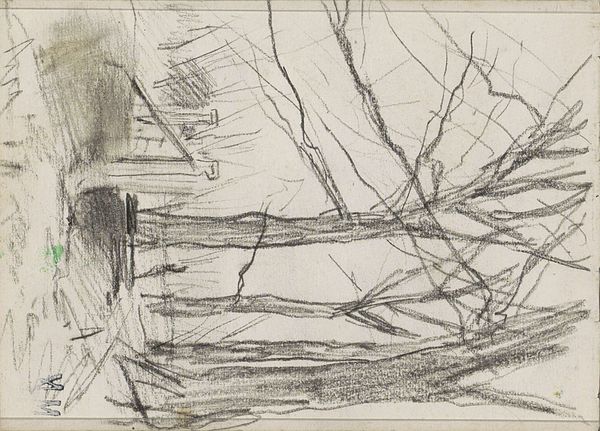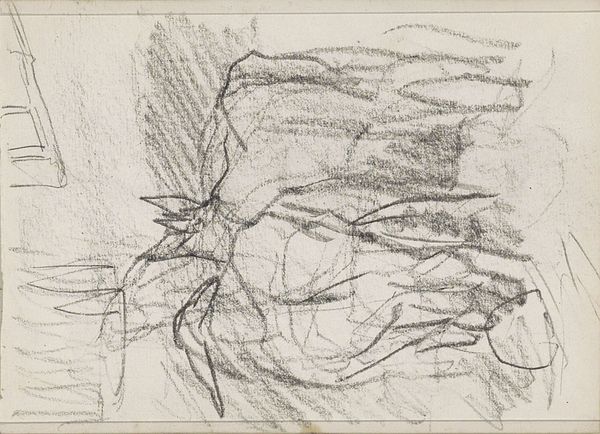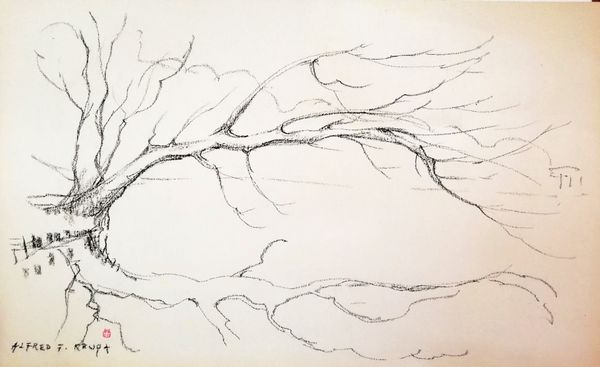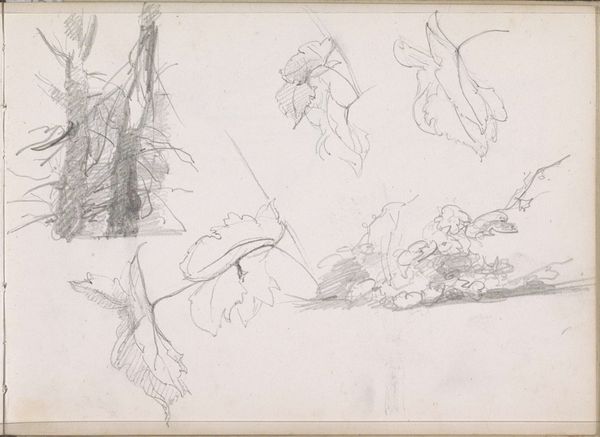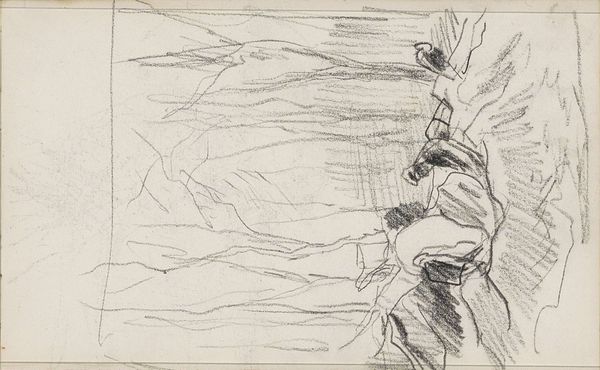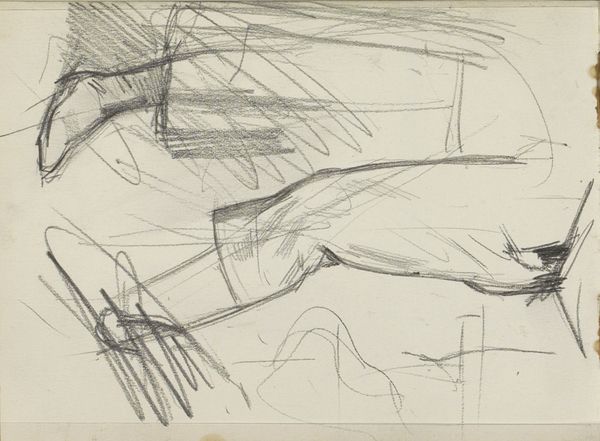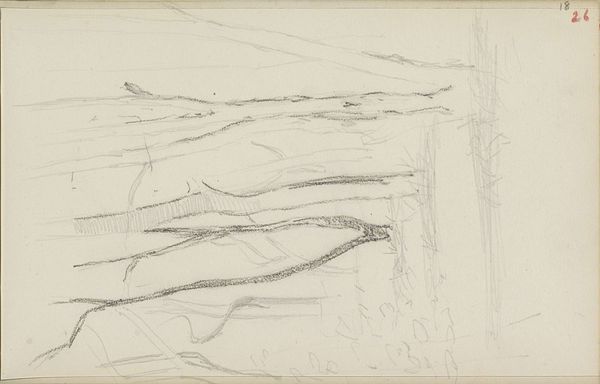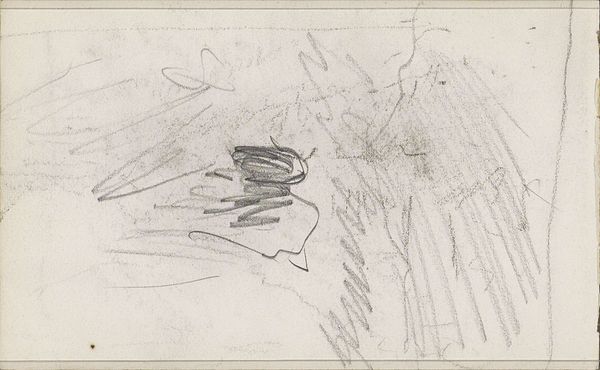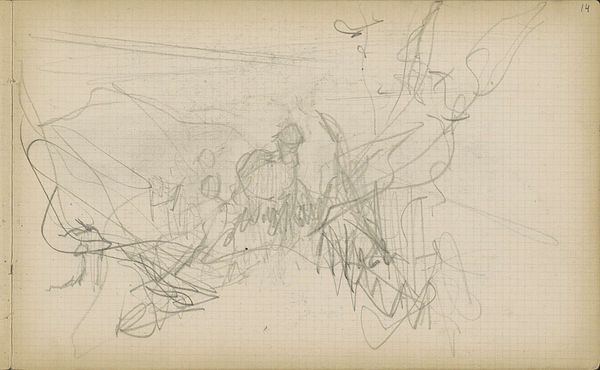
drawing, pencil
#
tree
#
drawing
#
amateur sketch
#
light pencil work
#
thin stroke sketch
#
pencil sketch
#
incomplete sketchy
#
landscape
#
bird
#
ink drawing experimentation
#
detailed observational sketch
#
pen-ink sketch
#
pencil
#
rough sketch
#
line
#
initial sketch
Copyright: Rijks Museum: Open Domain
Curator: Take a look at this sketch, "Vogels in een boom met kale takken," or "Birds in a Tree with Bare Branches," from sometime between 1865 and 1913, found here in the Rijksmuseum. It's rendered in pencil. What catches your eye about it? Editor: Well, right away, it strikes me as hauntingly simple. The bare branches clawing at the sky, those little birds perched so precariously… It feels like a moment of stillness caught in the middle of a harsher reality. Curator: It's incredible how much Bramine Hubrecht, the artist, conveys with so few lines. There’s such directness in her observation, almost a scientific curiosity combined with a delicate artistic sensibility. The way she uses the pencil—it feels both tentative and assured. Editor: You know, focusing on the pencil itself, it's easy to overlook the sheer amount of labor embedded in these seemingly simple lines. Someone had to make that pencil, process the graphite, cut the wood. Each mark represents a whole chain of production and human effort. The paper too. Where was this paper produced? What materials were available, affordable? Those kinds of material limitations likely shaped the outcome, the so-called artistic intention, quite substantially. Curator: Interesting. It does make you think about the economics of artmaking, even in what appears to be a spontaneous sketch. But I wonder if focusing *too* much on the materiality distracts us from the more emotional or symbolic content here? These birds, clinging to a wintery, bare tree…It feels so metaphorical to me. Perhaps, about hope or perseverance in the face of bleakness. Editor: Perhaps, though the rawness of the materials suggests something far less idealistic. There's also the labor in the trees: were these branches gathered? Were they trimmed? Who benefited from these trees being stripped, pruned, their very shapes defined for… use, presumably? Even natural landscapes get commodified. And this all ends up embedded within the art. Curator: I agree—and those connections, when you highlight them, enrich the artwork. I suppose my eye, though, continues to feel such quiet reverence here, that while this sketch may not be perfect or formally impressive, it is heartfelt, regardless of these layers that go unnoticed so often. Editor: Right—I hadn't thought of reverence like that, a reverence born of necessity, where humble materials make seeing like this possible. Curator: Exactly. Perhaps that’s how hope begins, with the material, the real, the imperfect, made somehow more lovely because of it all.
Comments
No comments
Be the first to comment and join the conversation on the ultimate creative platform.
